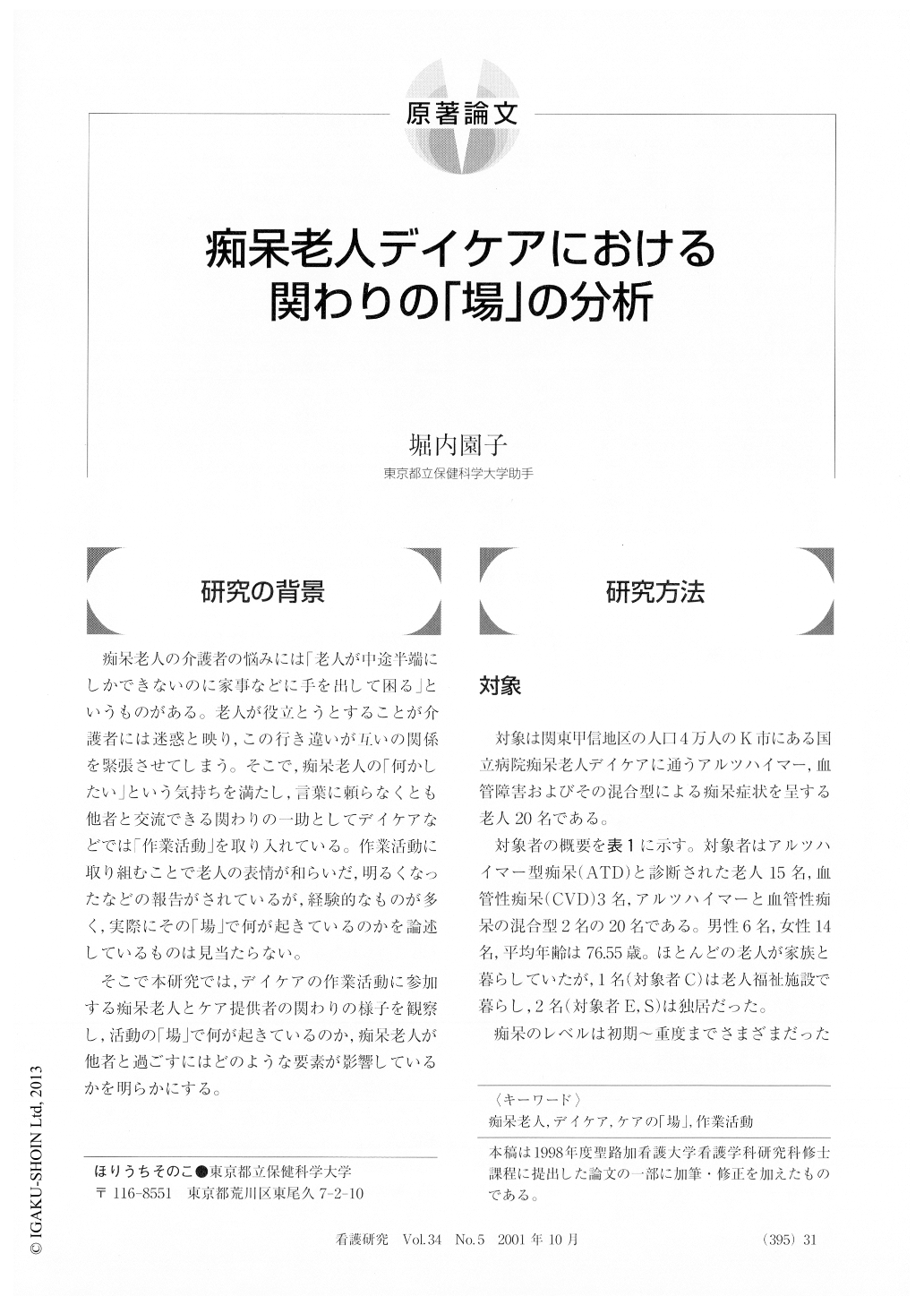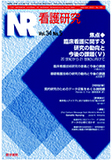Japanese
English
- 有料閲覧
- Abstract 文献概要
- 1ページ目 Look Inside
- サイト内被引用 Cited by
研究の背景
痴呆老人の介護者の悩みには「老人が中途半端にしかできないのに家事などに手を出して困る」というものがある。老人が役立とうとすることが介護者には迷惑と映り,この行き違いが互いの関係を緊張させてしまう。そこで.痴呆老人の「何かしたい」という気持ちを満たし,言葉に頼らなくとも他者と交流できる関わりの一助としてデイケアなどでは「作業活動」を取り入れている。作業活動に取り組むことで老人の表情が和らいだ,明るくなったなどの報告がされているが,経験的なものが多く,実際にその「場」で何が起きているのかを論述しているものは見当たらない。
そこで本研究では,デイケアの作業活動に参加する痴呆老人とケア提供者の関わりの様子を観察し,活動の「場」で何が起きているのか,痴呆老人が他者と過ごすにはどのような要素が影響しているかを明らかにする。
This study aims to make clear what happens in “the place” of “the work activity program” of dementia old people and what element influences on the relationship there between those dementia people and the others.
The subjects of this research are twenty elderly people; some are with Alzheimer's disease, some with vascular dementia, others with the mixture style of Alzheimer and vascular dementia.
The data were analyzed based on the observation. They were classified by the resemblance in the reactions, behavior. and the air recognized among the dementia people. Once the classification was done, they were named and categorized.
As a result of the analysis on ”the place” of “the work activity program”. two categories were found. They were (1) make a magnetic field and (2) collaborative establishment. Each of them consists from several sub categories. “Make a magnetic field” consists of three sub categories, (1) decide the magnetic pole. (2) fix the direction of the magnetic power. and (3) emissions and exchange of the power. “The place” of “the work activity program” included a category that can he identified as “collaborative establishment” achieved by sharing the experience at the “magnetic field” where dementia people are attracted. “The place” can be an area where the elderly can express experience and knowledge. Energy is created out of sense of solidarity and is exchanged there. That energy can he enhanced by recognized by others.
Such exercises as making a straw broom. and paste shoji paper on the sliding paper screen frame, call up good old days of the elderly. Another exercise like egg art, which makes use of crushed egg shells, gives them a pleasant surprise as unexpected artwork can be created by using familiar materials as egg shells. These exercises move the elderly and become dynamics for them.
“Collaborative establishment” includes two sub categories, (1) the same rhythm and flow and (2) sharing.
Once the elderly find out the harmonious pace of their work among them. they can share “the place” of their work without using difficult words. Through the interaction with others, the elderly experiences human, warm feeling. They might also have an experience that heightens their pride. All these factors contribute to form an organic place where the elderly can be aware what they should be as human beings.
With making use of the dynamics of “the place”, it is essential to build up a relationship that can share happiness and joy with the dementia elderly.

Copyright © 2001, Igaku-Shoin Ltd. All rights reserved.


